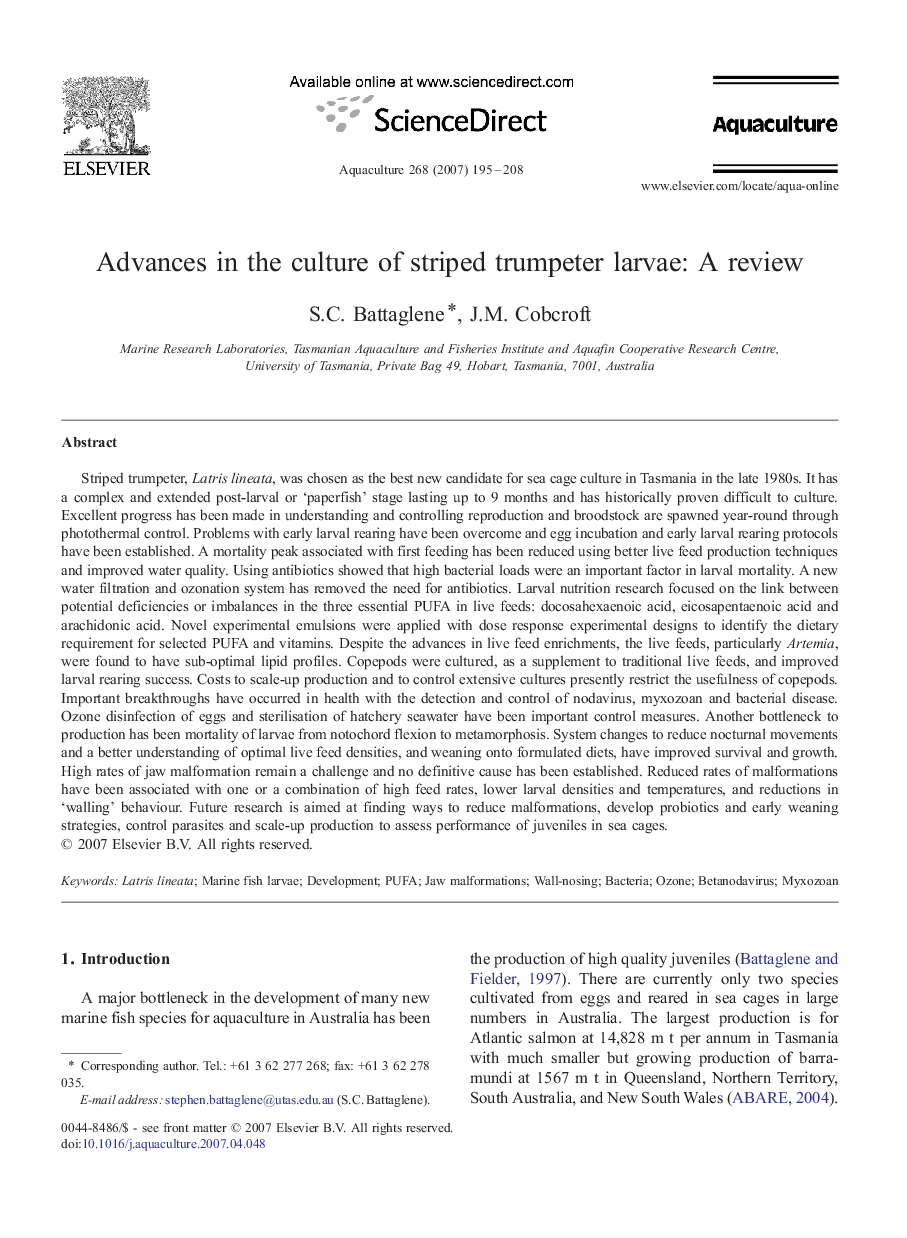| Article ID | Journal | Published Year | Pages | File Type |
|---|---|---|---|---|
| 2425241 | Aquaculture | 2007 | 14 Pages |
Striped trumpeter, Latris lineata, was chosen as the best new candidate for sea cage culture in Tasmania in the late 1980s. It has a complex and extended post-larval or ‘paperfish’ stage lasting up to 9 months and has historically proven difficult to culture. Excellent progress has been made in understanding and controlling reproduction and broodstock are spawned year-round through photothermal control. Problems with early larval rearing have been overcome and egg incubation and early larval rearing protocols have been established. A mortality peak associated with first feeding has been reduced using better live feed production techniques and improved water quality. Using antibiotics showed that high bacterial loads were an important factor in larval mortality. A new water filtration and ozonation system has removed the need for antibiotics. Larval nutrition research focused on the link between potential deficiencies or imbalances in the three essential PUFA in live feeds: docosahexaenoic acid, eicosapentaenoic acid and arachidonic acid. Novel experimental emulsions were applied with dose response experimental designs to identify the dietary requirement for selected PUFA and vitamins. Despite the advances in live feed enrichments, the live feeds, particularly Artemia, were found to have sub-optimal lipid profiles. Copepods were cultured, as a supplement to traditional live feeds, and improved larval rearing success. Costs to scale-up production and to control extensive cultures presently restrict the usefulness of copepods. Important breakthroughs have occurred in health with the detection and control of nodavirus, myxozoan and bacterial disease. Ozone disinfection of eggs and sterilisation of hatchery seawater have been important control measures. Another bottleneck to production has been mortality of larvae from notochord flexion to metamorphosis. System changes to reduce nocturnal movements and a better understanding of optimal live feed densities, and weaning onto formulated diets, have improved survival and growth. High rates of jaw malformation remain a challenge and no definitive cause has been established. Reduced rates of malformations have been associated with one or a combination of high feed rates, lower larval densities and temperatures, and reductions in ‘walling’ behaviour. Future research is aimed at finding ways to reduce malformations, develop probiotics and early weaning strategies, control parasites and scale-up production to assess performance of juveniles in sea cages.
